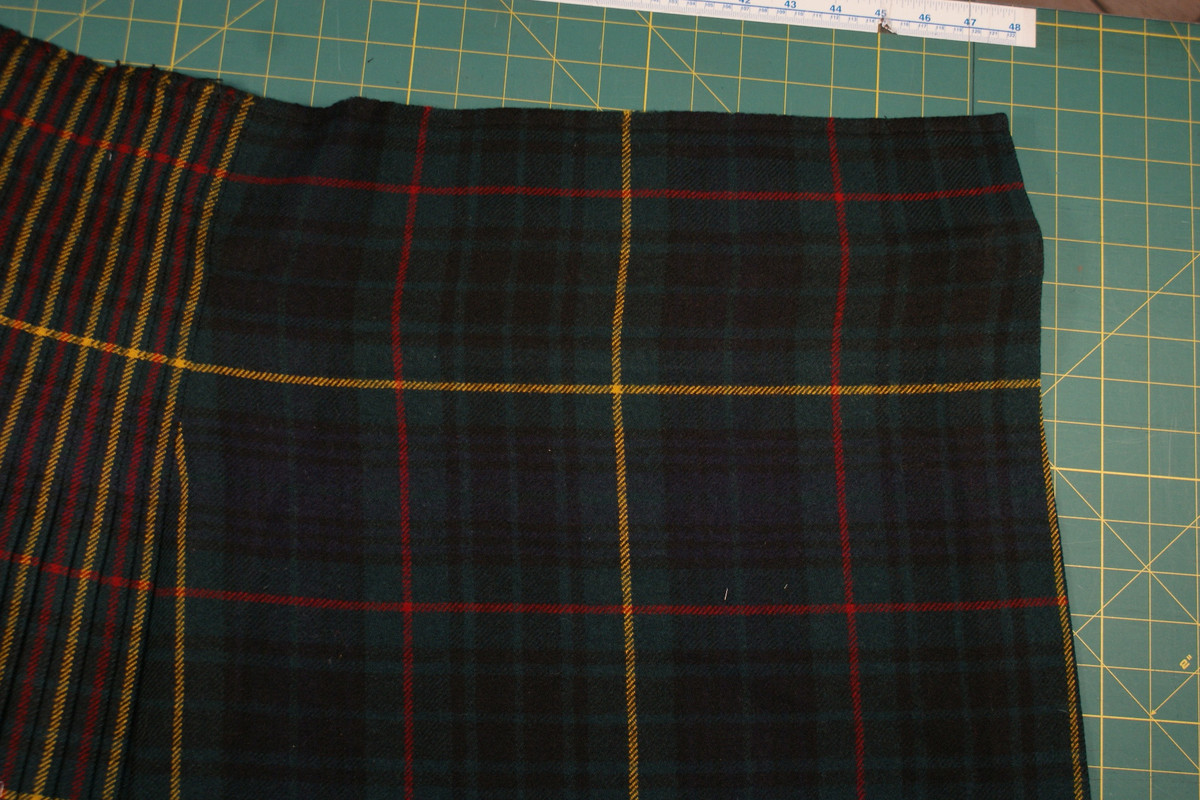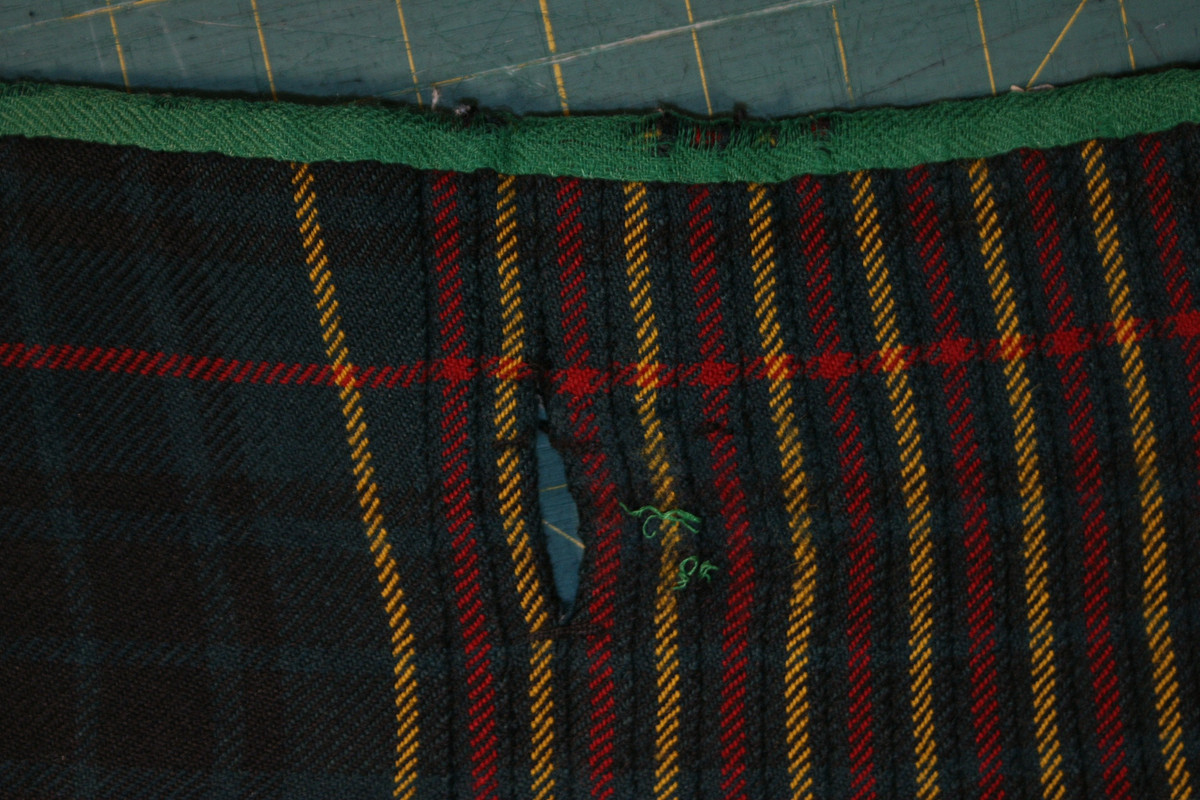I began to use the "Internal Left Strap" as the solution to a problem.
When I became Regimental Kiltmaker to The Canadian Scottish Regiment I was asked to make a line of kilts that could be re-sized easily. The idea was that the regiment would keep a few kilts in their stores to be issued to any new troops.
If they did not have one in the persons exact size they could issue the next larger size and tell the troop to bring it to me and I could re-size the kilt quickly and easily.
So I adopted an old idea that I first learned from Matt Newsome.
Move the buckle that would normally be found on the outside to the inside and install it on the left end of the under apron -
Move the strap normally found on the end of the under apron to the inside of the kilt corresponding to the location of the re-located buckle -
This idea had an unexpected consequence. Doing an internal left strap means that there is no hole in the kilt for the left strap to pass through. I have always seen this hole as a weak point in kilt construction. My Engineer's mind could never seem to get over intentionally building in a weak point that would need extra reinforcements to resist failure.
As time went on and I began to see more and more traditional kilts and many of them were showing signs of stress and failure of the left strap hole.
To solve the re-sizing issue and to address the weak point I began to use Matt Newsome's idea of an internal left strap.
I use this almost exclusively now. I'll put the left strap hole in a kilt if the customer specifically asks for it but 99% of the kilts I make use this method.
Here are a few photos that I have used in the book "The Hand-Crafted Contemporary Kilt".
The kilt in these photos is a hand stitched contemporary kilt with a 1" rise. (It also happens to have a custom lining that Barb hates.)
On the right side the buckle is installed as normal.
(The buckles of a Contemporary kilt are sewn by machine for added durability. They are sewn all the way though the outer Tartan fabric, through the floating interfacing, the stabilizer, and can be seen inside the kilt coming through the lining. If this kilt ever needs to be altered or re-sized after it leaves my shop this is a visual guide to the owner that the buckles and straps must be sewn all the way through to catch the internal strength elements and not just to the outer fabric.)

On the under apron left end the re-located left buckle is sewn the same way as the right buckle.

The outer apron strap is sewn just as it would be normally. (Please notice that I sew the straps on after the lining is installed.)

Then, to insure that the left strap is positioned correctly I fasten the right strap into the right buckle - put the left strap into the same hole of the left buckle - and 'walk' the two aprons just as if the kilt were being worn - And can then mark the position where the left strap will be sewn.

I can then sew the left strap using the same method I used for the right, outer apron, strap.

Another consequence of the "Internal Left Strap" is it allowed me to extend the internal stabilizer strip the entire width of the kilt. My stabilizers run from apron edge to apron edge. Both buckles and both straps are sewn to the same stabilizer strip.
This has proven to be very strong and durable.

A few of my kilts have been worn on a daily basis for over 7 years and they show no signs of the fabric distortion that I see in kilts made in the traditional manner with the hole.
Here is a kilt made by Gordon & Sons made in the traditional, military manner. This is an actual military kilt of The Canadian Scottish Regiment in the Stewart Hunting Tartan. You can see quite plainly that the under apron fabric has distorted over time due to the stresses of wearing it.

And the left strap hole has failed and needed to be repaired more than once.

And here is a Contemporary kilt using the Internal Left Strap method after 5 years of wearing on an almost daily basis.
]








































Bookmarks